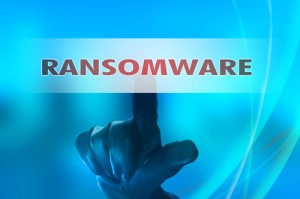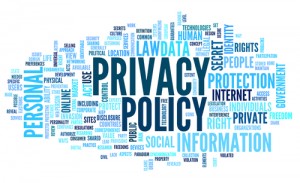Patient privacy concerns are at an all-time high following the Supreme Court’s ruling in Dobbs v. Jackson Women’s Health Organization. Following their statements affirming that abortion constitutes basic and essential health to which every woman should be entitled issued by both Xavier Becerra, Secretary of the United States Department of Health and Human Services (“HHS”) and Chiquita Brooks-LaSure, Administrator of the Centers for Medicare and Medicaid Services, the Office of Civil Rights of HHS (“OCR”) released new guidance on June 29th clarifying scenarios when an individual’s protected health information (“PHI”) may, but does not have to be, released. One such example is disclosures required for law enforcement purposes. OCR explains that the Privacy Rule permits, but does not require covered entities to disclose PHI about an individual for law enforcement purposes “pursuant to process and as otherwise required by law”, under certain conditions. For example, “a covered entity may respond to a law enforcement request made through such legal processes as a court order or court-ordered warrant, or a subpoena or summons, by disclosing only the requested PHI, provided that all of the conditions specified in the Privacy Rule for permissible law enforcement disclosures are met.” It states further:
Continue reading…OCR
Federal Trade Commission, HIPAA, OCR / No Comments
On July 29, 2016, the Federal Trade Commission (“FTC” or “Commission”) reversed an FTC administrative law judge’s (“ALJ”) opinion which had ruled against the FTC, finding that the Commission had failed to show that LabMD’s conduct caused harm to consumers to satisfy requirements under Section 5 of the FTC Act. In reversing the ALJ, the FTC issued a unanimous opinion and final order that concluded, in part, that public exposure of sensitive health information was, in itself, a substantial injury.
The FTC initially filed a complaint against LabMD in 2013 under Section 5 of the FTC Act, alleging that the laboratory company failed to “provide reasonable and appropriate security for personal information on its computer networks,” which the FTC claimed lead to the data of thousands of consumers being leaked. The complaint resulted from two security incidents that occurred several years prior, which the FTC claimed were caused by insufficient data security practices.
In its opinion, the FTC concluded that the ALJ had applied the wrong legal standard for unfairness and went on to find that LabMD’s data security practices constituted an unfair act or practice under Section 5 of the FTC Act. Specifically, the Commission found LabMD’s security practices to be unreasonable – “lacking even basic precautions to protect the sensitive consumer information on its computer system.” The Commission stated that “[a]mong other things, [LabMD] failed to use an intrusion detection system or file integrity monitoring; neglected to monitor traffic coming across its firewalls; provided essentially no data security training to its employees; and never deleted any of the consumer data it had protected.” As a result of these alleged shortcomings in data security, medical and other sensitive information for approximately 9,300 individuals was disclosed without authorization.
Further, and perhaps more importantly, the Commission concluded that “the privacy harm resulting from the unauthorized disclosure of sensitive health or medical information is in and of itself a substantial injury under Section 5(n), and thus that LabMD’s disclosure of the [ ] file itself caused substantial injury.” Thus, contrary to the findings of the ALJ, the Commission essentially held that the mere exposure of sensitive personal and health information into the public domain may be enough to constitute a substantial injury for purposes of Section 5, without any proof that the information was ever misused.
As a result, the FTC ordered LabMD to establish a comprehensive information security program, obtain independent third party assessments of the implementation of the information security program for 20 years, and to notify the individuals who were affected by the unauthorized disclosure of their personal information and inform them about how they can protect themselves from identity theft or related harms.
Takeaway: While LabMD has announced its intention to appeal, the FTC’s decision reinforces its role as an enforcer of data security, even in the health care arena, where OCR has been the traditional enforcer of HIPAA and health care data breaches. Thus, in addition to OCR, health care entities must continue to monitor FTC enforcement actions to see if there are any additional or conflicting data security standards mandated by both agencies. Any companies handling PHI should, therefore, continue to ensure that their data security policies and procedures are being implemented and followed in accordance with industry standards. Inadequate security safeguards may contribute to data breaches resulting in government investigations and enforcement actions – not just by OCR, but the FTC as well.
For more information about the FTC’s opinion, contact Gregory M. Fliszar or a member of Cozen O’Connor’s Health Law team.
 In response to the increasing prevalence of ransomware cyber-attacks by hackers on electronic health information systems in hospitals and medical practices, the Department of Health and Human Services (HHS) Office for Civil Rights (OCR) announced on Monday July 11, 2016 its publication of new HIPAA guidance on ransomware (“Ransomware Guidance”). According to OCR:
In response to the increasing prevalence of ransomware cyber-attacks by hackers on electronic health information systems in hospitals and medical practices, the Department of Health and Human Services (HHS) Office for Civil Rights (OCR) announced on Monday July 11, 2016 its publication of new HIPAA guidance on ransomware (“Ransomware Guidance”). According to OCR:
Ransomware is a type of malware (or malicious software) that encrypts data with a key known only to the hacker and makes the data inaccessible to authorized users. After the data is encrypted, the hacker demands that authorized users pay a ransom (usually in a cryptocurrency such as Bitcoin to maintain anonymity) in order to obtain a key to decrypt the data.
Notably, the HIPAA Security Rule already requires implementation of security measures to help covered entities and business associates prevent the introduction of malware (e.g., ransomware) into their systems, and to implement policies and procedures to assist in responding to ransomware attacks. The Ransomware Guidance addresses, among other areas, how to implement security measures in order to prevent, mitigate the chances of, or even recover from ransomware attacks. Not surprisingly, conducting a risk analysis (or risk assessment) is at the core of covered entities and business associates implementing security management processes as required by the HIPAA Security Rule. The Ransomware Guidance further notes that maintaining an overall contingency plan, as required by the Security Rule, that includes disaster recovery planning, emergency operations planning and frequent backups of data can also help covered entities and business associates respond to and recover from malware infections, including ransomware attacks.
In addition, the Ransomware Guidance states that ransomware attacks against a covered entity or business associate can be considered a breach under the HIPAA Rules. Specifically, the Ransomware Guidance provides, “[w]hen electronic protected health information (ePHI) is encrypted as the result of a ransomware attack, a breach has occurred because the ePHI encrypted by the ransomware was acquired (i.e. unauthorized individuals have taken possession or control of the information), and thus is a ‘disclosure’ not permitted under the HIPAA Privacy Rule.” Therefore, unless it can be shown that there is a low probability that the PHI involved in the ransomware attack has been compromised based on the factors in the Breach Notification Rule, a breach is presumed to have occurred, which would trigger the applicable breach notification provisions.
Even before OCR’s publication of the Ransomware Guidance, in late June the Secretary of HHS sent a letter (“Letter”) to the attention of chief executive officers at health care entities addressing the threat of ransomware. The Secretary attached interagency guidance to the Letter containing best practices and mitigation strategies integral to combatting ransomware incidents.
Ransomware is immediately disruptive to the day-to-day operation of businesses, as seen by its impact earlier this year on health care systems like MedStar in Washington, D.C. and Hollywood Presbyterian Medical Center in Los Angeles (“HPMC”), resulting for example, in HPMC paying 40 Bitcoins (approximately $17,000) to regain control of its computer system. Although the Ransomware Guidance does not address whether payment or ransom should be paid to regain access to computer systems, the interagency guidance attached to the Letter advises against paying hackers because, among other reasons, paying a ransom doesn’t necessarily guarantee that an entity will regain access to its system. The Ransomware Guidance does recommend that an entity victimized by a ransomware attack contact its local FBI or United States Secret Service field office.
For more information about the Ransomware Guidance contact Gregory M. Fliszar, Ryan Blaney, J. Nicole Martin or a member of Cozen O’Connor’s Health Law team.
The Department of Health and Human Services (HHS) Office of Civil Rights (OCR) finally announced on March 21 that it is ready to begin Phase Two of its HIPAA audit program, which will include business associates. These audits, mandated by HITECH, will primarily be comprised of desk audits, scheduled for completion by the end of December 2016, followed by onsite audits.
OCR explained it will immediately commence Phase Two by verifying, via email, cover entities’ and business associates’ contact information. The OCR is requesting timely responses, so that it can send pre-audit questionnaires out in order to gather data from covered entities and business associates for the creation of potential audit subject pools. The data will relate to the entities’ size, type and operations. Should covered entities and business associates fail to respond to OCR’s requests, they may still be part of OCR’s potential subject pools because OCR plans to compile publicly available information about covered entities and business associates that do not respond to its requests.
The first round of desk audits will focus on covered entities, and the second round will focus on business associates. The third round will be onsite audits, with a greater focus on the HIPAA requirements. OCR explains that some covered entities and business associates who are subject to desk audits may also be subject to onsite audits. According to OCR, all covered entities and business associates are eligible to be audited. The audits will focus on identifying compliance with specific privacy and security requirements under HIPAA/HITECH, and OCR will notify auditees by letter, regarding the subject(s) of their specific audits. On the HHS website, OCR provides a sample letter for review. Subsequent to the audits, OCR will review and analyze information from audit final reports.
Importantly, if an audit report uncovers significant noncompliance with HIPAA, it could prompt an investigation by OCR. The areas of interest for OCR in Phase Two will become clearer as the Phase Two audit program gets underway, but for now, we know OCR will focus on assessing covered entities’ and business associates’ HIPAA compliance, identifying best practices and discovering risks and vulnerabilities.
More information about the Phase Two audits is available here, and you can also contact Greg Fliszar, Ryan Blaney, J. Nicole Martin or another member of Cozen O’Connor’s Health Law team.
 On consecutive days, the Office of Civil Rights (“OCR”) of the Department of Health and Human Services (“HHS”) recently announced two large HIPAA breach settlements. On March 16, 2016, OCR announced that it entered into a Resolution Agreement with North Memorial Health Care of Minnesota for $1.55 million plus a two-year corrective action plan. On March 17, 2016 OCR followed by announcing that Feinstein Institute for Medical research, a New York biomedical research institute, agreed to pay to OCR $3.9 million and enter into a three-year corrective action plan to settle potential HIPAA violations. Both cases resulted from the all too familiar scenario of breaches resulting from stolen, unencrypted laptops.
On consecutive days, the Office of Civil Rights (“OCR”) of the Department of Health and Human Services (“HHS”) recently announced two large HIPAA breach settlements. On March 16, 2016, OCR announced that it entered into a Resolution Agreement with North Memorial Health Care of Minnesota for $1.55 million plus a two-year corrective action plan. On March 17, 2016 OCR followed by announcing that Feinstein Institute for Medical research, a New York biomedical research institute, agreed to pay to OCR $3.9 million and enter into a three-year corrective action plan to settle potential HIPAA violations. Both cases resulted from the all too familiar scenario of breaches resulting from stolen, unencrypted laptops.
In the Minnesota hospital breach, the unencrypted laptop containing the PHI of over 9,000 individuals was stolen from the locked car of an employee of a business associate of the hospital. According to the OCR’s investigation, the hospital failed to have a business associate agreement in place with that particular business associate. OCR also alleged that the hospital had not previously performed a risk analysis to identify and address potential risks and vulnerabilities to the ePHI it maintained, accessed or transmitted.
In the New York research corporation breach, OCR alleged that the institution did not have policies and procedures in place, including a policy on encryption and one that addressed use and access of electronic devices (e.g., the removal of the devices from the institution’s facility), nor did it have in place a security management process that sufficiently addressed potential security risks and vulnerabilities to ePHI, namely, its confidentiality, vulnerability or integrity. Notably, the stolen, unencrypted laptop contained the PHI of approximately 13,000 individuals.
As above, both OCR settlements also include multiple year corrective action plans requiring the hospital and research facility to conduct risk analyses/assessments, train their employees, and have HIPAA compliant policies and procedures in place. The Resolution Agreement for the Minnesota hospital breach is available here, and the Resolution Agreement for the New York research institute breach is available here.
Takeaways: The OCR’s 2016 breach enforcement is off to a very strong start with two high dollar settlements. Lessons learned from both breaches include the significance of encrypting electronic devices, conducting and updating on a regular basis security risk assessments and analyses, having adequate safeguards in place to protect PHI, having business associate agreements with all business associates, and having and implementing HIPAA policies and procedures to protect the security and privacy of PHI, including for example, policies related to encryption, authorized access to ePHI/PHI, and removal of electronic devices from facilities.
For more information, contact Greg Fliszar, J. Nicole Martin, or a member of Cozen O’Connor’s Health Law team.
 In the wake of recent gun violence and in a concerted effort to protect public safety, the Department of Health and Human Services (HHS) released a final rule published in the Federal Register January 6, 2016, that modifies the HIPAA Privacy Rule to expressly permit certain HIPAA covered entities to disclose to the National Instant Criminal Background Check System (NICS) the identities of persons who are subject to a Federal “mental health prohibitor” that would prevent such individuals from possessing a firearm (“Final Rule”). The covered entities are those that have “lawful authority to make the adjudications or commitment decisions that make individuals subject to the Federal mental health prohibitor, or that serve as repositories of NICS reporting purposes.”
In the wake of recent gun violence and in a concerted effort to protect public safety, the Department of Health and Human Services (HHS) released a final rule published in the Federal Register January 6, 2016, that modifies the HIPAA Privacy Rule to expressly permit certain HIPAA covered entities to disclose to the National Instant Criminal Background Check System (NICS) the identities of persons who are subject to a Federal “mental health prohibitor” that would prevent such individuals from possessing a firearm (“Final Rule”). The covered entities are those that have “lawful authority to make the adjudications or commitment decisions that make individuals subject to the Federal mental health prohibitor, or that serve as repositories of NICS reporting purposes.”
The Final Rule, which will appear at 42 C.F.R § 164.512(k)(7), adopted what HHS had initially proposed in April 2013 in its proposed rule. The purpose of the Final Rule is to afford the NICS with the ability to identify individuals subject to this prohibitor for the purpose of disqualifying them from shipping, transporting, possessing or receiving a firearm. Individuals subject to the Federal mental health prohibitor include those who have been involuntarily committed to a mental health institution, found incompetent to stand trial or not guilty by reason of insanity, or have been determined by a court or other lawful authority to be a danger to themselves or others or being unable to manage their own affairs. The disclosures to the NICS will be restricted to limited demographic and other information required by the NICS. Further, the Final Rule specifically prohibits the disclosure of any diagnostic or clinical information and “any mental health information beyond the indication that the individual is subject to the Federal mental health prohibitor.”
Importantly, the Final Rule’s express permission to disclose/report is narrowly tailored. Specifically, it does not extend to covered entities permission to report to the NICS the protected health information of individuals who are subject to the State-only mental health prohibitors. Additionally, the permission is not extended to “most treating providers”, which emphasizes HHS’ intention to protect the privacy of the patient-provider relationship.
A key tension at the heart of the gun control issue for years has been how to adequately protect individual privacy, in particular, mental health information, and maintain public safety. Not surprisingly, the Final Rule’s publication comes at a time of heightened tension between these issues, and President Obama announced yesterday that under his executive actions on guns, the administration will, among other actions, seek to expand mandatory background checks for certain private gun sales.
The Final Rule is effective February 5, 2016, 30 days from its publication in the Federal Register. To learn more about reporting under the Final Rule and the amended HIPAA regulation, please contact Greg Fliszar, J. Nicole Martin or any member of Cozen O’Connor’s Health Care team.
In August 2012, a Physician Group—comprising of nearly 20 physicians—reported its HIPAA breach to HHS, which resulted from a laptop bag containing the employee’s laptop and a computer server backup being stolen from an employee’s car in July 2012. According to the Resolution Agreement between HHS and the Physician Group, the laptop did not contain ePHI, but the portable, unencrypted server backup in the employee’s bag did. The backup contained ePHI for 55,000 individuals. To settle this matter, the Physician Group has agreed to pay $750,000.
Although stolen laptops and lack of encryption is nothing new in the world of HIPAA breaches, this situation stands out for a few reasons:
- The Physician Group did not conduct “an accurate and thorough” risk assessment;
- The significance of encryption extends not only to desktop computers and laptops, but also to portable devices, including but not limited to computer server backups; and
- This is a notable fine for a Physician Group of less than 20 physicians.
For more information regarding this incident and HIPAA compliance, including the importance of encryption and risk assessments, contact J. Nicole Martin or any member of Cozen O’Connor’s healthcare law team.
 On April 27, 2015, the U.S. Department of Health and Human Services (“HHS”) Office for Civil Rights (“OCR”) announced that Cornell Prescription Pharmacy (“Cornell Pharmacy”) had entered into a resolution agreement to settle, without an admission of liability or wrongdoing, potential HIPAA violations. As part of the resolution agreement Cornell Pharmacy will pay $125,000 and enter into a two-year corrective action plan (“CAP”) focused on correcting the alleged deficiencies in its HIPAA compliance program.
On April 27, 2015, the U.S. Department of Health and Human Services (“HHS”) Office for Civil Rights (“OCR”) announced that Cornell Prescription Pharmacy (“Cornell Pharmacy”) had entered into a resolution agreement to settle, without an admission of liability or wrongdoing, potential HIPAA violations. As part of the resolution agreement Cornell Pharmacy will pay $125,000 and enter into a two-year corrective action plan (“CAP”) focused on correcting the alleged deficiencies in its HIPAA compliance program.
Cornell Pharmacy is a small, single store pharmacy located in Denver, Colorado that specializes in compound medications and providing services for local hospice agencies. OCR began an investigation into the pharmacy after it received a media report from a Denver news agency that protected health information (“PHI”) belonging to Cornell Pharmacy was apparently disposed of and found in an unlocked, publicly accessible dumpster. The documents were not shredded and contained the PHI of approximately 1,610 of Cornell Pharmacy’s patients. After conducting its investigation, OCR concluded that Cornell Pharmacy failed to implement any written policies and procedures as required by HIPAA’s Privacy Rule, and further failed to provide training on the Privacy Rule to its workforce members.
This settlement is instructive as OCR again highlights the importance of having updated and comprehensive HIPAA policies and procedures in place, including policies on the proper disposal of PHI, and on training all staff on those policies and procedures. Further, in this year of massive cyber-attacks and other breaches of electronic data, this HIPAA settlement serves to remind covered entities and business associates not to forget about protecting their paper records as well. As stated by OCR in its press release, “Even in our increasingly electronic world, it is critical that policies and procedures be in place for secure disposal of patient information, whether that information is in electronic form or on paper.” As discovered by Cornell Pharmacy, a breach or other improper disclosure of paper PHI can also result in significant consequences.
For further information please contact the author, Gregory M. Fliszar (Philadelphia, PA), or other members of Cozen O’Connor’s healthcare team.
 In response to the recent Ebola outbreak in West Africa and in light of patients being treated in several hospitals in the U.S., the HHS, OCR (OCR) recently issued a HIPAA Bulletin to remind us that HIPAA covered entities and business associates must maintain the privacy of protected health information (PHI) even in emergency situations (“Guidance”). According to the OCR, the Guidance serves as a reminder “that the protections of the [HIPAA] Privacy Rule are not set aside during an emergency.”
In response to the recent Ebola outbreak in West Africa and in light of patients being treated in several hospitals in the U.S., the HHS, OCR (OCR) recently issued a HIPAA Bulletin to remind us that HIPAA covered entities and business associates must maintain the privacy of protected health information (PHI) even in emergency situations (“Guidance”). According to the OCR, the Guidance serves as a reminder “that the protections of the [HIPAA] Privacy Rule are not set aside during an emergency.”
The OCR explains that the HIPAA Privacy Rule requires a balance between the protection of the privacy of PHI against the necessary uses and disclosures of such information “to treat a patient, to protect the nation’s public health, and for other critical purposes” during emergency situations. Although the OCR introduces no new requirements under the HIPAA Privacy Rule, the Guidance lays out the circumstances under which patient information may be shared in emergencies, such as for/due to:
- Disclosures to Family, Friends, and Others Involved in an Individual’s Care and for Notification
- Disclosures to the Media or Others Not Involved in the Care of the Patient/Notification
- Imminent Danger
- Public Health Activities (i.e., to a public health authority; at the direction of a public health authority, to a foreign government agency; and to persons at risk)
- Treatment
The OCR reminds us that most disclosures require covered entities to make “reasonable efforts to limit the information disclosed to that which is the ‘minimum necessary.’” Further, covered entities are also required to: (i) implement “reasonable” safeguards necessary to protect PHI from intentional/unintentional uses and disclosures that are impermissible under HIPAA; and (ii) continue to apply administrative, physical and technical safeguards to protect e-PHI under the HIPAA Security Rule.
Further, according to the OCR, under the Project Bioshield Act of 2004 and Section 1135(b)(7) of the Social Security Act, the Secretary of HHS may waive certain HIPAA Privacy Rule provisions during public health or other emergencies. Such limited waivers require both the President to declare an emergency or disaster and the Secretary of HHS to declare a public health emergency. Additional information regarding the limited waivers appears in the Guidance.
As Ebola remains an emergency of both national and international concern, it not surprising that federal agencies continue to publish updated Ebola guidance. This Guidance reminds all of us, especially covered entities and business associates, that even in emergency situations, patient privacy must be protected, unless the limited waiver is invoked, and if not, covered entities and business associates will face consequences for violating the HIPAA Privacy Rule. For additional information regarding the HIPAA Privacy Rule in the context of emergency situations, see the HHS website. Also see similar guidance (Bulletin and Bulletin published by HHS in 2005 in response to Hurricane Katrina.
